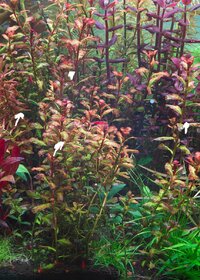The increasing the dosing frequency was my solution when using urea, little and often. With using a PLC for a timer for DIY doser I was able to dose my urea based AIO fert 100 times a week ( few drops every 12mins). On ther tank was still dosing Macros and Micros so dosed every couple of hours macros then Micros. Which should IMO/IME prevent the spikes/peaks in 'NH4/NO2' levels.s it something that the tank is going to adjust to over time too
Only down side of little and often is the end of dosing pipe needed more regular cleaning as the fert being dosed tended to ppt out a little on end of pipe








